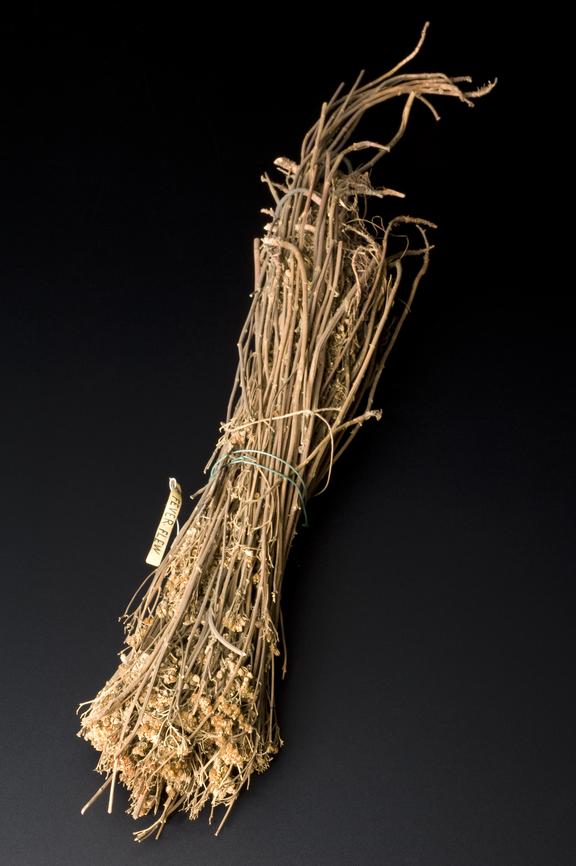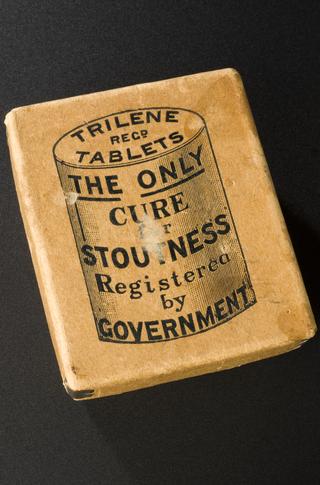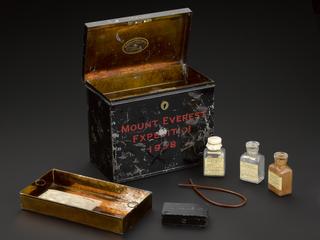
Bunch of feverfew herbs, Middle East, 1871-1920
- Made:
- 1871-1920 in Middle East

Bunch of herbs, feverfew variety, Middle East (?), 1871-1920
The feverfew plant (Tanacetum parthenium) belongs to the sunflower family and originates from Southeast Europe. It grows wild in many places across the world, including Britain. Feverfew has been a traditional remedy to assist menstruation. It was also thought to help with fevers, migraines and ‘hysteria’. However, it could also induce an abortion when mixed with herbs such as pennyroyal and mugwort. It often formed the basis of many abortion-inducing pills and potions available to women over the centuries. These usually had to be obtained in indirect ways such as word of mouth or via discreet advertisements.
Details
- Category:
- Materia Medica & Pharmacology
- Collection:
- Sir Henry Wellcome's Museum Collection
- Object Number:
- A659334
- Materials:
- herb
- Measurements:
-
overall: 770 mm 100 mm,
- type:
- herb



